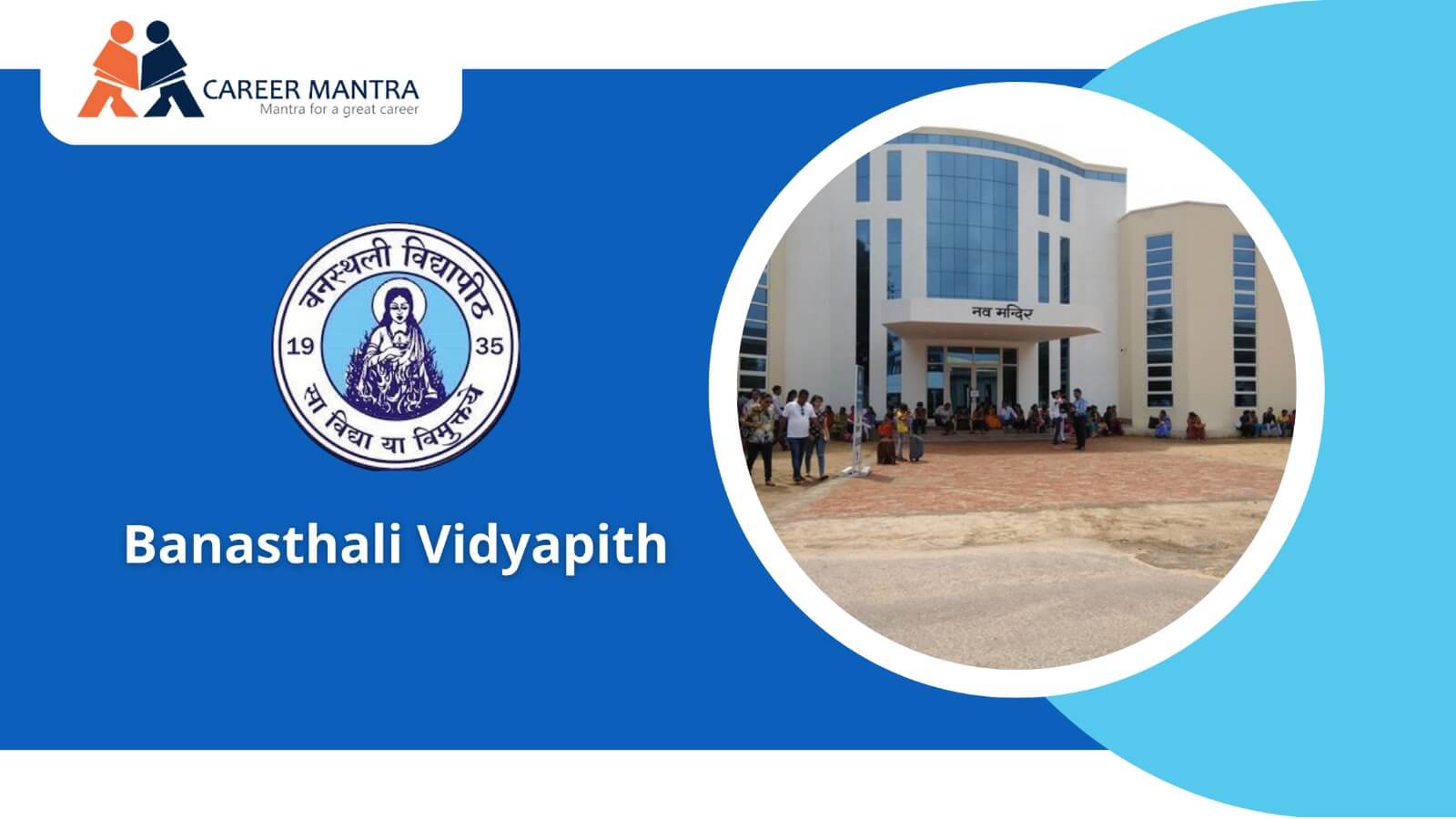Banasthali Vidyapith

About Banasthali Vidyapith University –
The Banasthali Vidyapith is a fully residential institution of higher learning for women that provides an integrated system from the primary to the doctoral levels.
Smt. Ratan Shastri and Pandit Hiralal Shastri established Banasthali on October 6, 1935, to fill the void left by the unexpected passing of their talented and promising daughter Shantabai. They had high hopes for her to grow up and struggle for the rights of women. But destiny had other plans. As a result, neither the zeal of an educationist nor that of a social reformer is responsible for Banasthali’s existence. Additionally, it is not the product of a philanthropist’s wallet. It has emerged from the ashes of a blooming flower, Shantabai, like the famous phoenix.
One of India’s five higher education institutions designed solely for women is called Banasthali. Banasthali has evolved into a National Center for Women’s Education over the past 75 years. The educational curriculum at Banasthali strives to nurture a student’s personality on all levels. Banasthali Vidyapith’s rural setting is ideal for fostering the idea of simple life as well as for instilling and internalising the ideals of independence and tolerance. The institute offers several chances for the balanced Panchmukhi method of education’s guiding philosophy—integrated personality development. The emphasis on the good parts of Indian origin has produced an atmosphere that has substantially aided in the process of uplifting women so they may confidently assume leadership roles.
Banasthali Vidyapith has been developing new programmes that are relevant to female students ever since it was founded as a university in 1983. Changes to the curriculum are always made while taking into account both the theoretical and practical aspects of the subject. The selection of foundational programmes and the introduction of vocational programmes at the graduate level are excellent examples of how it is reflected. Additionally, the introduction and successful implementation of Post Graduate programmes in developing fields like M.Tech. (Remote Sensing), M.Tech. (VLSI Design), M.Des., M.Sc. (Bio-Informatics), MBA (Aviation Management), M.Sc. (Electronics), M.Sc. (Bio-Technology), MCA, and MBA; programmes of an interdisciplinary nature like M.Sc., M.Phil in Social Sciences;
Banasthali Vidyapith Campus –
Since 1935, Banasthali University has been a pioneering organisation in the sphere of women’s education. The institution’s 850-acre campus is home to multiple structures of diverse shapes and sizes that house different academic and administrative buildings. The campus, which can accommodate its residents’ basic needs, has been largely separated into the University division, School division, and residential blocks.
Banasthali Vidyapith Accommodation –
Residential education is offered at Banasthali University. There are 29 hostels, with rooms for 110 to 438 students each. All hostels now have access to the network and the Internet, giving students limitless chances to harness the power of the Internet. More than 400 completely furnished staff quarters of various sorts, including one-story cottages, multi-story modern apartments, and a Working Women’s Hostel with 113 beds, are available.
Banasthali Vidyapith Sports –
The school has top-notch facilities for gaming and sporting events. Parades and yearly fairs are held in the Laxmi Bai maidan (26,690 square metres). Additionally, it contains a stage and a projection room for regularly scheduled cultural events and movie screenings. Fields for sports like hockey, volleyball, basketball, tennis, yoga, martial arts, and large-scale physical display events are available at the Vidula Maidan (41,950 square metres). There is also enough room for indoor sports like badminton and table tennis. The pool is available to students, employees, and their families. Horseback riding, which has been practised for a long time and requires 41 horses and a field named “Veer Bala Maidan,” is another unusual hobby (25,390 sq. meters).
Banasthali Vidyapith Central Library –
The Central Library offers 8 Mbps Internet connectivity through a variety of means, including a BSNL leased line and a VSNL leased line. The library has been utilising LIBSYS, a comprehensive software package for Integrated Library Management that includes all the modules needed for library housekeeping tasks. More than 1.60 lakh records of books (bibliographic information) and 13,500 back issues of periodicals can be found in the library’s online catalogue (OPAC). 550 of the roughly 600 periodicals the library currently receives are subscription-based, while the rest titles are free. Online access to almost 9000 titles is provided through UGC-INFONET Consortia.
Banasthali Vidyapith Hospital –
The Banasthali University operates “Apaji Arogya Mandir,” a hospital with 60 beds, competent medical professionals, and other hospital personnel. Throughout the year, the hospital is open 24/7.
Banasthali Vidyapith Transport –
At intervals of 15 minutes, shuttle services are provided by minibuses. The Banasthali-Newai Railway station, located 7 kilometres from the university, is also accessible via bus. From 6 am to 6 pm, The Rajasthan Roadways operates a regular, practically hourly bus service from Jaipur to the college via Newai.
Banasthali Vidyapith Placement –
The official placement report for 2023 has not yet been made public by the university. However, according to the NIRF report 2022, only 874 of the 1,207 UG and PG students who applied for placements at Banasthali Vidyapith Jaipur were ultimately hired. During the Banasthali Vidyapith placements in 2021, the median salary provided to BTech and Bpharm students was INR 5.60 LPA and INR 3.50 LPA, respectively.
Banasthali Vidyapith Mission –
The idea behind Banasthali Vidyapith is to bring Indian culture and nationalism to life. The twin pillars of nationalism and Indian culture serve as the foundation for Banasthali’s whole construction. Banasthali Vidyapith has always had a distinct viewpoint on its educational endeavours and a strong vision of the structure and design of the educational programmes that will be used.
An educational curriculum should be able to support the development of a students’ harmonious and balanced personalities, according to the Vidyapith’s designers. As a result, the Vidyapith’s educational curriculum was different from the kind of education that was popular at the time and focused solely on book learning, to the complete exclusion of all other areas of education.
Find Top Colleges in India:-
For more information Chat on WhatsApp:-


